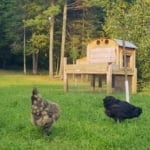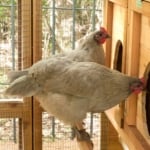DIY Chicken Coop: Turn an Unused Shed Into A Chicken Coop
We checked in with author and chicken keeper, Lisa Steele, of Fresh Eggs Daily, for tips to converting an existing structure on your property into a safe, predator-proof coop for your new flock!
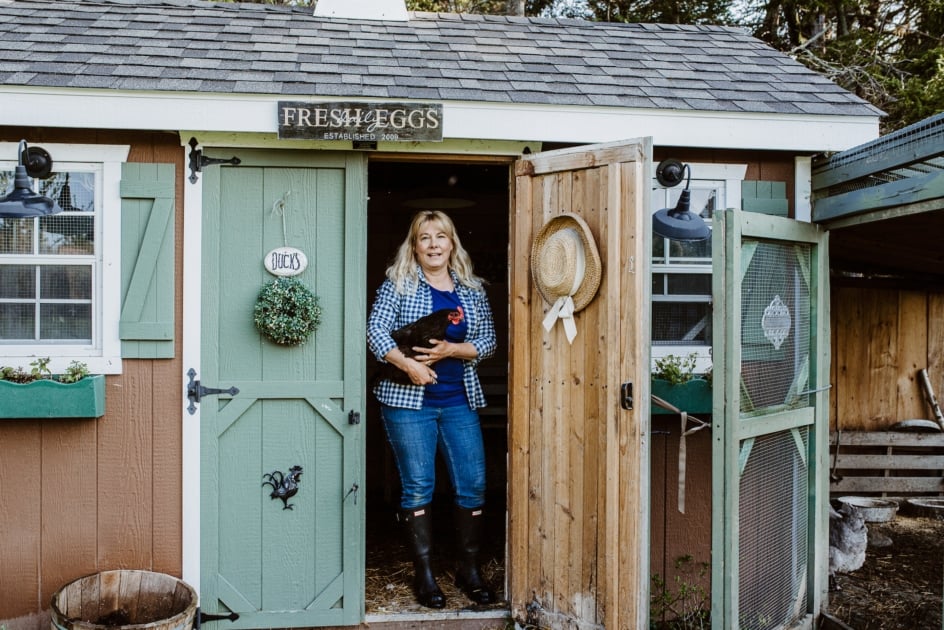
Raising chickens has been gaining popularity with suburbanites and urbanites over the past decade, and today, these numbers are growing even larger. With a few fluffy feathered friends in your backyard, it’s possible to supply your family with a fairly steady stream of fresh eggs without ever stepping foot inside a grocery store.
When you begin to add up all the start-up costs, even a small flock of chickens can be an expensive proposition when you figure in the cost of the chicks, feed, supplements, feeders, waterers, and heat lamps, not to mention the cost of buying or building a coop for them.
RELATED: Raising Backyard Chickens for Beginners
If you’re handy, you can save money by building your own chicken coop, but if you’re not, it’s simple enough to convert an existing structure you already have on your property into a perfectly functional and safe home for your flock to sleep and lay their eggs in.
Type of Structures You Can Use For Your DIY Chicken Coop
Do you have a playhouse no longer being used? A garden shed, or an old doghouse and chain-link kennel? What about a potting shed, or even a horse stall or tack room in your barn? Any of these outbuildings will easily convert into a chicken coop.
New baby chicks? You’ve got about 8 weeks from the time you get your chicks until they can be outside. That’s plenty of time to convert your shed into a suitable coop for them.
In addition to saving time and money, there are several advantages to converting an existing structure into a chicken coop. First and foremost, a coop needs to be predator-proof to protect your flock at night from all the wildlife looking for an easy chicken dinner. Starting with a secure structure with solid wooden walls and a wooden or even a concrete floor is half the battle.
With a few minor modifications, your structure can be flock-ready in no time. The specific modifications your structure will need will depend on the size and style of the building that you’re converting, but here are some things to think about and features that every good coop shares.
Converting An Existing Structure – Getting Started
Start From The Ground Up
First, you’ll need to move everything out of the building. Sweep the floor clean and remove any pieces of wire, string or rubber, along with any loose screws, nails, or other debris. Chickens will eat anything and are especially attracted to shiny things. It’s also important to check the area outside the building and rake any odds and ends you find in the grass into the trash.
Your chicken coop will need a solid floor so predators like skunks, dog, or fox can’t dig in from underneath. If the building has a dirt floor that’s easily breached from underneath by digging predators, simply lie some wooden pallets on top of the dirt and then cover them with sheets of plywood. Screw the plywood in place using 1×1 boards or furring strips to secure it.
This will prevent your floor from rotting and also prevent predators from gaining access. A sheet of inexpensive vinyl flooring on top of the plywood makes for easy cleanup and prevents mites and other parasites from burrowing into the wooden floor. Add a nice layer of pine shavings or straw, and your coop now has a nice secure floor covering with nice soft bedding material.
As far as floor space in your coop goes, you’ll want to allow for 3-4 square feet per chicken.
Little Chicken Door
In addition to the regular “human-sized” door in your coop, you’ll likely also want a smaller “chicken-sized” doorway for your flock to use to access their pen. The chicken door is usually located on one side wall of the coop and can simply be a hole cut through the wall, measuring 12” x 12” or similar in size.
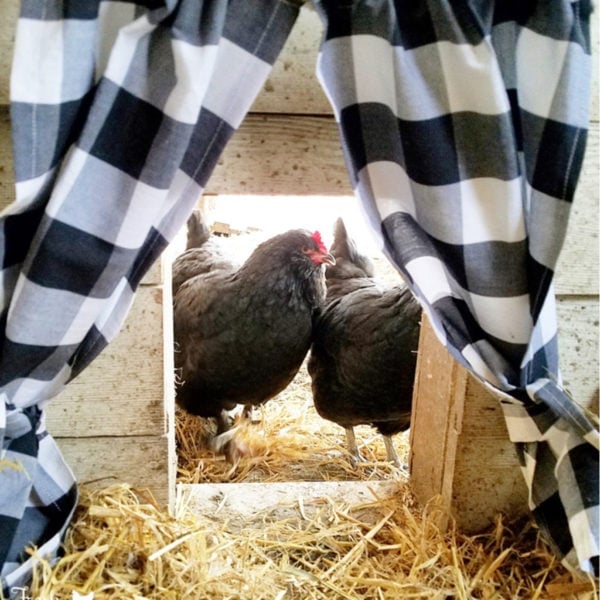
Keep the piece of plywood you cut out, attach hinges to one side, and position it over the hole you cut to make a basic door that can be locked at night to keep your chickens safe. You’ll also need to install a predator-proof latch on the door that a wily raccoon can’t open. A latch with a carabiner or a locking eye hook is a good choice.
Alternatively, you can install an automatic solar- or battery-powered chicken door that will open at sunrise and close at sunset. Automatic doors are available commercially from various companies.
Replace the Front Door Latch
You’ll also need to add a latch on the front door of your coop that a raccoon can’t open, assuming there isn’t one already. So again, an eye hook with a spring-loaded latch, a deadbolt secured with a carabiner, a padlock or other type of predator-proof latch is a must.
Nesting Boxes
Next, you’ll need to set up a place for your chickens to lay their eggs. Nesting boxes should be about 12” x 12” and filled with nice soft bedding such as pine shavings, straw or a nesting pad. They can be set at ground level, or raised off the ground a bit to make egg collecting a little easier.
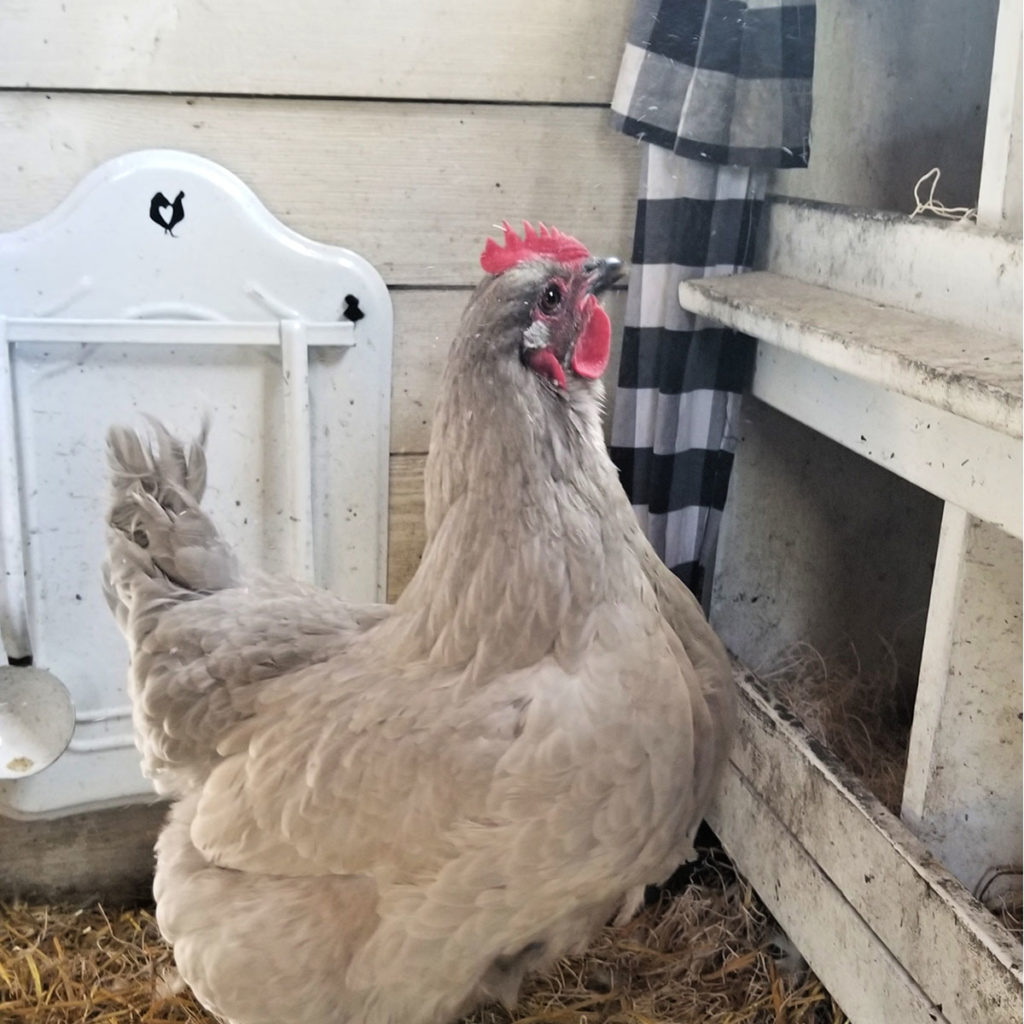
If you’re handy, you can build a row of wooden boxes and screw them into one wall of the coop, otherwise, consider repurposing 5-gallon plastic buckets, storage totes, kitty litter boxes, or wooden crates set on their sides and secured.
Place some fake eggs, golf balls or even stones in each of the boxes to entice your chickens to lay their eggs in them.
Roosting Bars
Next, you’ll need to build roosts for your chickens to sleep on. Chickens naturally seek the highest ground they can to sleep, so to avoid them sleeping in their nesting boxes (which need to stay clean for them to lay eggs in), be sure you position the top roosting bars higher than the boxes.
Staggering the roosts in a laddered design makes it possible for the chickens to hop from one roost to the next to get up or down. You should allow for a minimum of eight inches roosting bar per hen.
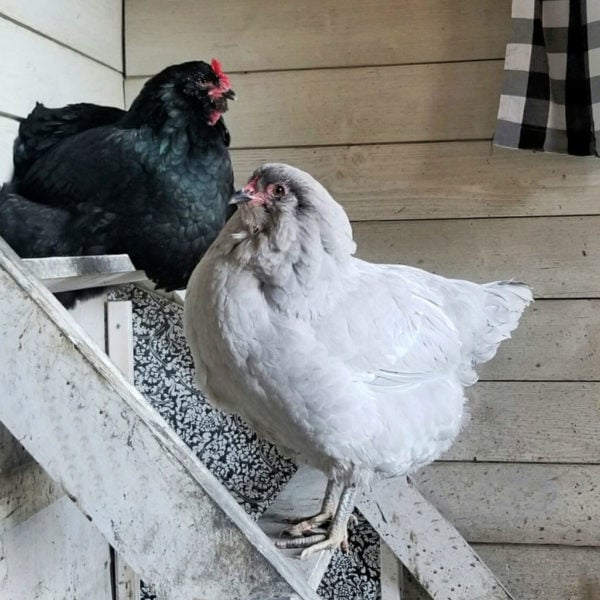
The easiest way to build roosting bars is to use 2 x 4 boards. With the 4-inch side facing up, secure the boards to the back or side wall of your coop.
Angling the roosting bars allows for more chickens to fit. Construct a slanted ladder with the steps about 15” apart so that your chickens can roost one row above the other without pooping on each other when the roost is leaned up against the wall.
Alternatively, you can lean a few wooden ladders against the wall for your chickens to roost on. Be sure to secure them to the wall so they stay in place. Metal ladders are okay in the warmer climates, but would be too cold in northern areas in the winter.
Windows
It’s likely that your structure already has windows. It’s very important that a chicken coop has good ventilation. At least 1/5th of the total wall area should be doors, windows or vents. It’s also unlikely that the windows are predator-proof, so you’ll need to cover the windows with ½” or ¼” welded wire even if the windows have screens in them. The welded wire will keep even the smallest predators like weasels, snakes, and mice out of your coop.
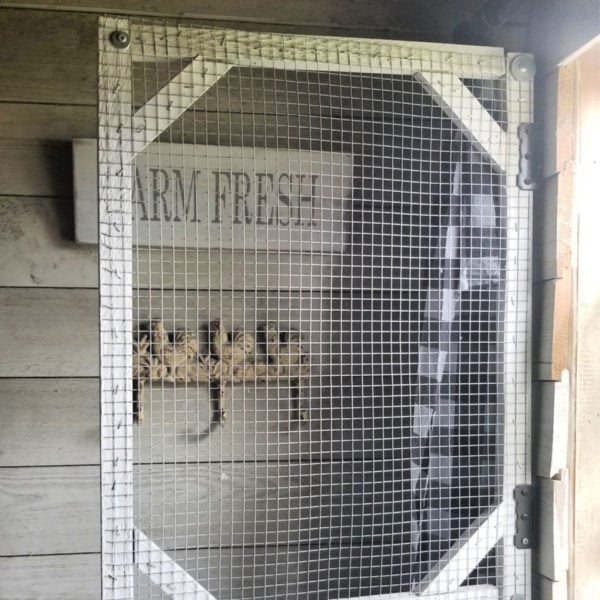
You can staple the welded wire up, but securing it at the corners with a screw and washer is a good idea because raccoons are strong and can easily rip wire down.
If your structure doesn’t have any windows, then simply cut openings in the wall, ideally above the level of the top roosting bars so your chickens don’t get a draft while they sleep, and cover them with the welded wire. In warmer climates you can leave the windows open year round, while in colder climates you’ll want to close the windows in the winter.
Vents
In addition to windows, you will need vents in your chicken coop. It’s important to have good cross ventilation in the coop to allow fresh air to flow in and ammonia fumes from the chicken manure to escape. The vents should be right up under the eaves of your coop, ideally one each wall, and again covered with welded wire. They don’t need to be large–just 4×8 or so is adequate–but should stay open year-round. In lieu of covering the vents with welded wire, metal floor grates screwed over the vent holes will work well also.
Lastly, check every inch of the structure for any holes larger than an inch and close them up to be sure nothing can get into your coop. Once you’ve done that, you’re ready to introduce your flock of backyard chickens to their new home!
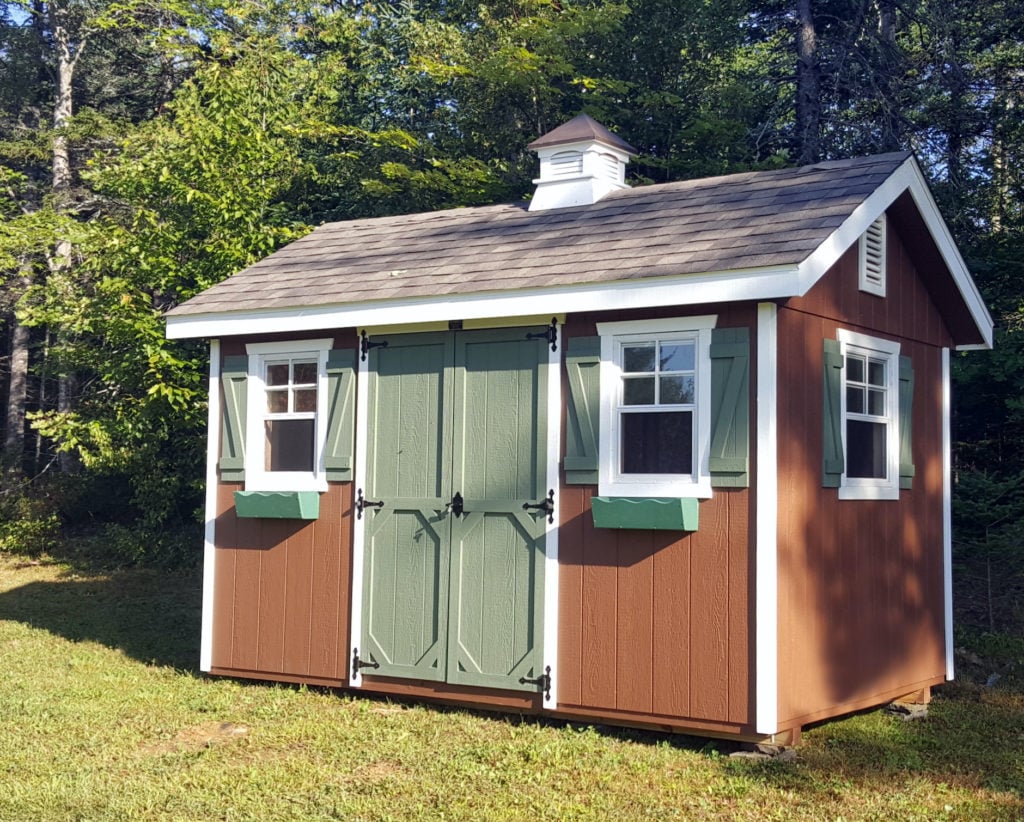
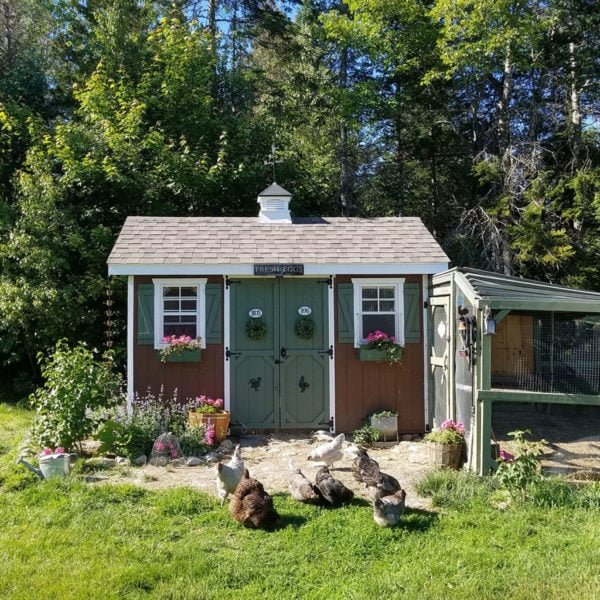
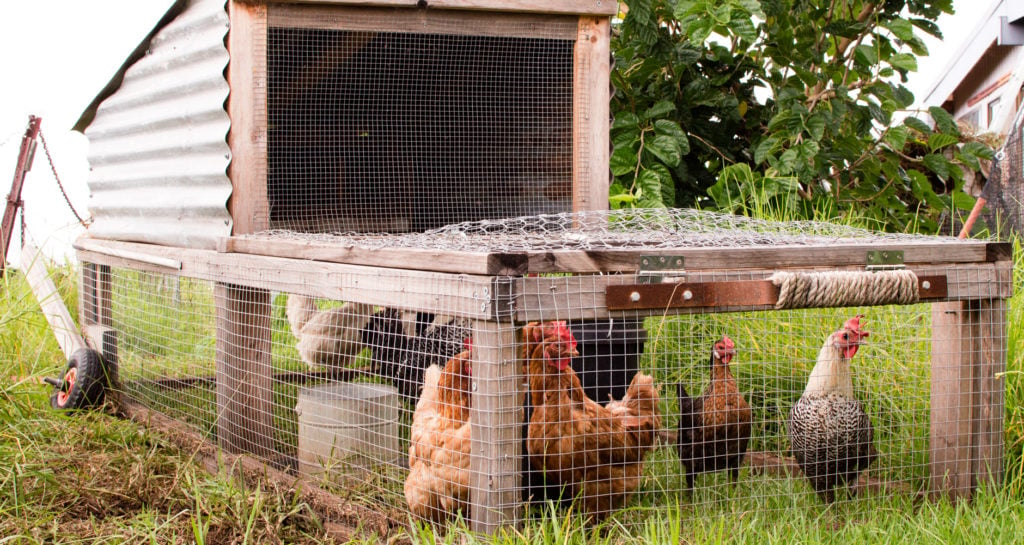
Join the Discussion
Do you have any tips for making a DIY chicken coop?
Please leave a comment! We all have something to learn from each other.

Lisa Steele
Lisa Steele is an author and 5th generation chicken keeper who shares a farm in Maine with her husband, mixed flock of chickens and ducks, two dogs, and a cat. She writes the natural chicken keeping blog Fresh Eggs Daily. Visit www.FreshEggsDaily.com.




